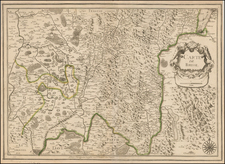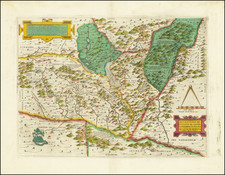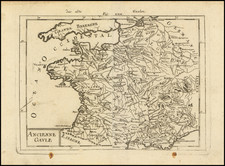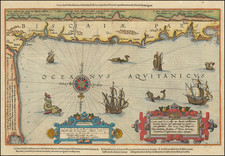Rare Broadside Battle Plan of the Siege of Lille with Extra Text Panels
Rare Pierre Husson Plan of Lille showing the positions of the Dutch, English, Prussian and Danish armies against the French army during the siege of Lille on September 13, 1708.
The map provides an exceptionally detailed depiction of the siege, meticulously detailing the positions of the various troops, commanders and fortifications around the fortified walls of Lille.
While the plan alone is rare, we located only a single example of this map with text panels, with the text being very different than the present example.
The Siege of Lille
The Siege of Lille (August 12, 1708 - December 10, 1708) was the major confrontation of the 1708 campaign season during the War of the Spanish Succession. After 120 days of Siege, the French garrison surrendered the city and citadel of Lille, commanded by Marshal Boufflers, to the forces of the Duke of Marlborough and Prince Eugene.
The siege was famous among contemporaries for l'affaire des poudres ("the gunpowder incident"), where the Chevalier de Luxembourg with 2,000 horsemen passed through the Allied lines and succeeded in delivering 40,000 pounds of desperately needed gunpowder to the defenders.
The siege was made possible by the destruction of the French army at the Battle of Oudenarde and the landing in Ostend of large amounts of ammunition and food after the Battle of Wijnendale. For most of the campaign, Eugene commanded the forces besieging Lille, while Marlborough commanded the forces covering those forces against external French interference.
On October 22, 1708, the Allies entered the city at the staggering cost of 12,000 casualties. Boufflers continued to resist from Lille's citadel for several weeks, exacting an additional 4,000 allied casualties. While the allies' movements frustrated French attempts to relieve their precious fortress-the last substantial French bastion in northern Flanders-Boufflers' defense likewise prolonged the siege well into winter, to the point where no operations could be undertaken against France that year.
With the loss of Lille, the French presence in northern Flanders crumbled and the Allies moved against Ghent, taking the city in late December. However, an invasion of France the following summer along the corridor opened by the fall of Lille would run into a bloody standstill at the Battle of Malplaquet.










![[Course of the Rhine River] Nova Tractus Totius Rheni Oder Neue beschreibung des Rhein-Strom](https://storage.googleapis.com/raremaps/img/small/58670.jpg)



